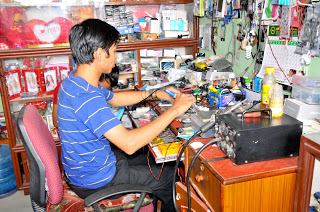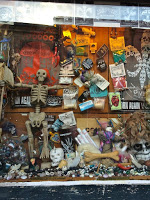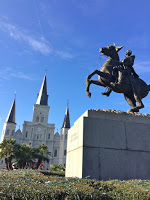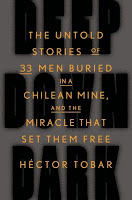December 2015
“All I want for Christmas…”
 |
| Jagatman’s amputation |
It’s a leg.
With all the shopping we do at Christmas, imagine wishing only for a leg. When I visited Nepal in September, I reported on one of our “boys,” Jagatman. He’s only 26, same age as my daughter Tara. Unlike her, his life is so uncertain and frail. He has hemophilia; he lives in a country that purchases no factor.
 |
| Jagatman at work |
And he lost his leg due to an untreated bleed. Through Project SHARE, we provided factor for the surgery to remove his leg, to save his life. And he’s so grateful to us. Sigh, the fates must be angry. The April 25 earthquake ripped apart his brick home. I stood before the rubble of what once was the home of the Rajbchak family.
 But he has a mobile phone repair shop (Save One Life helped get him started with funding) and I saw him eagerly at work. He’s good! Industrious, focused and determined to succeed. It must have taken a lot of courage to ask me to help him purchase a leg. He’s outgrown his current prosthetic; it hurts him. Given the high tolerance for pain these boys have, it must re
But he has a mobile phone repair shop (Save One Life helped get him started with funding) and I saw him eagerly at work. He’s good! Industrious, focused and determined to succeed. It must have taken a lot of courage to ask me to help him purchase a leg. He’s outgrown his current prosthetic; it hurts him. Given the high tolerance for pain these boys have, it must re
ally hurt him. He earns only about $500 a month from the shop, and must pay rent. The leg he showed me in a colorful brochure costs almost $4,000. A fortune. A king’s ransom.
 |
| With brother Monsoon, who also has hemophilia |
But I promised this handsome young man that by Christmas, we’d buy him that leg. What better gift?
And last week we made good. The money was wired and he will soon have his leg. Despite a chronic disorder, limited access to medicine and poverty, Jagatman is beating the odds. His attitude is astounding; his determination like Rocky’s. His focus like a laser beam.
And he’ll never know that the gift he’s given me is so much more than anything I can ever give him.
Merry Christmas to our friends in Nepal, and those with bleeding disorders everywhere!
Great Book I Just Read
Best rock bio I have ever read. Told by the iconic guitarist of the Rolling Stones, Richards almost seems as surprised by his life’s journey as you are bound to be after reading this. Meticoulously detailed, Richards shares his humble beginnings, his teen encounter with life long rock partner Mick Jagger, their rocky road to fame, the drugs, the alcohol… but what makes this bio so different is first, the Stones are one of the greatest rock bands in the world, from the early 60s and still playing! Second, Richards delves into the music: his love of American blues, what he wrote, why, how he got ideas, the chords, the notes, the guitars. This is what I have been wanting to know: how do these musicians create? He’s a voracious reader, loves his library, and lives in Connecticut, a few hours from me. He’s a survivor for sure, and what a story he has to tell. Five/five stars!
It’s Just a Phase: Clinical Trials of New Products
Deep Down Dark: The Untold Stories of 33 Men Buried in a Chilean Mine, and the Miracle That Set Them Free [Kindle]
Hector Tobar
Pulse on the Road in Baton Rouge
 |
| Zoraida and Kelly before the presentation |
 |
| Laurie Kelly and attendee Shawn Whelan |
 |
| Speakers Michelle Rice (NHF), Kelly Lynn Gonzales and Laurie Kelley |
Said Carl, an attendee with hemophilia, “I’ve heard and read lots of testimonials from people and their problems with insurance, doctors and hospitals. But these ladies really opened my heart on how some people are really neglected.”
 |
| Laurie and Jan Hamilton, founder of HFA |
| We end the year with a pep talk! Read your insurance policy annually, document your insurance inquiries and treatments, watch for hidden costs, and put aside an emergency fund for unexpected escalating costs and to help pay for hospitalizations. Be vigilant! |
 |
| Voodoo Shop! |
 |
| Louisiana Riverboat |
 |
||
Andrew Jackson Statue
|








